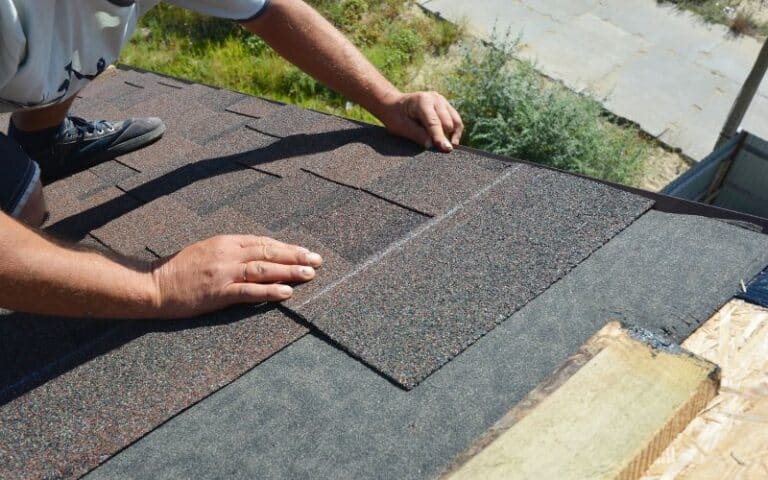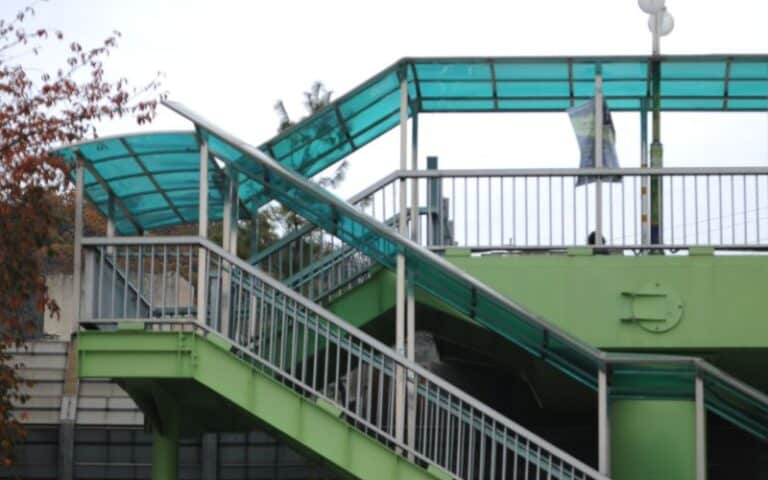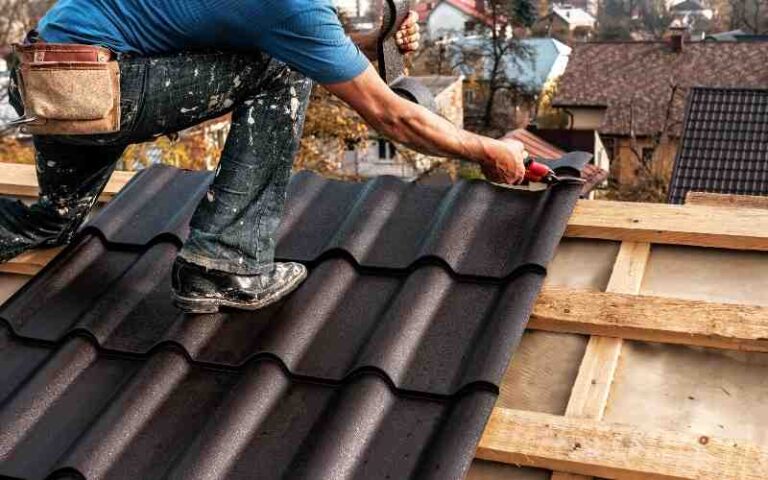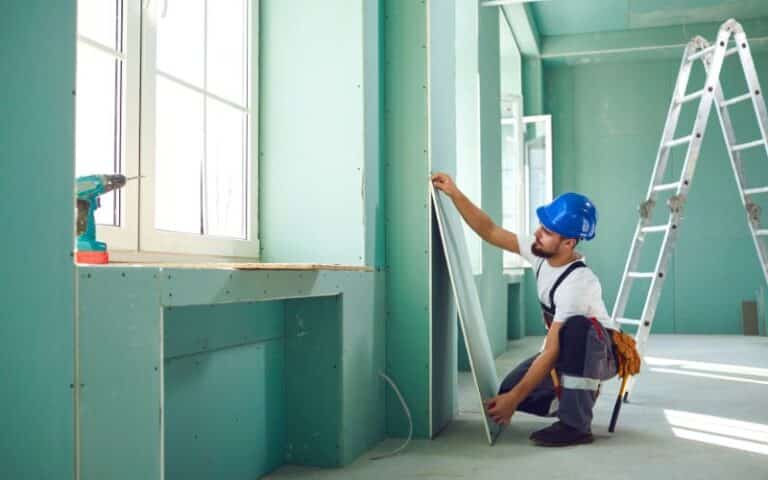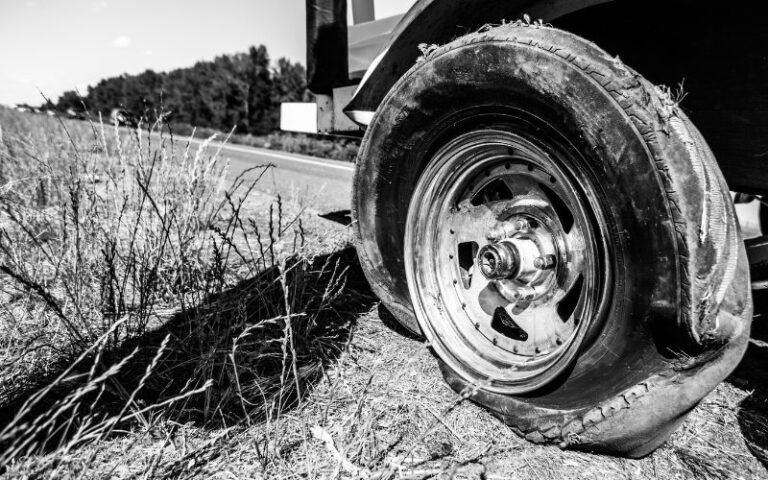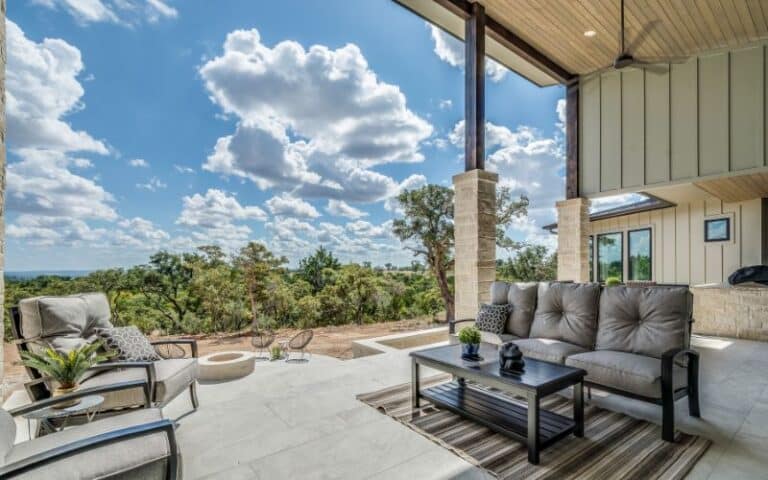People go the extra mile to give their buildings an incredible and unique look. But, of course, you and I aren’t an exception; I mean, who doesn’t like beautiful things?
So asking this question is not unexpected. For this reason, I will explore the world of roofing systems in this article. The focus will be on the fiberglass roofing system’s new and most-talked-about roofing system.
Read between the lines as we explore it together.
No, you can’t felt over a fiberglass roof. Indeed, a fiberglass flat roof is multipurpose; however, it is also selective. The reason is that the felt will hinder the resin’s cure used to saturate the glass mat. This uncured resin would result in messy roofing leading to the total removal of the whole roof.
Ready for a Roofing Quiz?
What Is A Fibreglass Roof?

You might have heard or come across fiberglass roof before, without knowing what it is and what it is used for. This article will shed more light on it. Read more to know if you can Felt Over Corrugated Roof?
As the name implies, fiberglass is a combination of different materials that have purposes that are complementing. The materials include polyester resins which serve as a saturation aid for the glass mat.
This water-resistant glass-reinforced plastic makes it a super solid and durable material, fiberglass trims, a topcoat, and a form of decking.
Fiberglass roof is also called GRP fiberglass flat roofing or GRP flat roof. The GRP stands for Glass Reinforced plastic which is otherwise called fiberglass.
People call it a GRP flat roof because it’s commonly produced in a flat shape. This makes it very suitable for flat roofs.
Though you can mold it to suit the condition of your roof, such as a pitched roof, you can quickly achieve this because of its polyester.
Can You Put Felt Over A Fibreglass Roof?
No, you can’t put felt over a fiberglass roof. When the polyester resin in the fiberglass roofing system starts curing, it will soften the felt making it very weak.
This won’t allow both the fiberglass and felt to bond tightly to each other. However, some people try it out by applying adhesive to the surface of the felt. Meanwhile, this isn’t 100% effective.
Is Fibreglass Roofing Better Than Felt?
Yes, a Fibreglass roof is better than felt. Although it depends on the quality of the materials you are using, it’s advisable to acquire the best roofing materials for your buildings.
Both felt, and fiberglass roofs are water-resistant materials; however, one has more advantages over the other.
Truly, fiberglass is a new roofing system, but it has built an outstanding reputation for itself in the roofing world over the years. This makes numerous people choose it over other roofing systems nowadays.
Below are some of the advantages of fiberglass roofing;
- The fiberglass roofing system is more robust than felt roofing. Glass is one of the materials that make it up; this gives it the ability to withstand any natural events such as heavy rain, snowdrops, wind, and sunlight, and so on.
However, felt, on the other hand, is made of paper that requires extra care during installation. Any mistake during the process will result in water leakage, which can damage the interior of your building.
- Fiberglass flat roofing is more durable and reliable than felt roofing. In addition, it has a lifespan of 20-30 years; felt roofing, however, has a shorter lifespan.
- Fiberglass roofing is relatively easier and faster to install than felt roofing. Even though it’s made of glass, it’s flexible and extremely lightweight at the same time.
- Fiberglass roof, when damaged, just needs to undergo an easy professional repair. Unlike felt that its repair isn’t advisable because it can lead to problems in the future.
- Fiberglass roofing is a versatile material that you can use for other numerous things aside from roofing. Such items include boats, yachts, lorries, ponds, water tankers, etc.
- Fiberglass roof isn’t only waterproof material but also fire-resistant material. This is made possible because of the corrosion-resistant laminates and fire retardant resins added to it.
- The fiberglass roof has no seams. Therefore it can’t fail quickly, let alone let water inside your building.
- It’s desirable, thereby giving your building a wonderful and unique look.
- Fiberglass roofing is the perfect option for your flat roofs. For this reason, it’s also popularly known as fiberglass flat roofing.
- And lastly, the fiberglass roofing system requires no or less maintenance. And if you detect any debris on it, it is exceedingly vital that you can walk on it freely, get rid of the dirt, and wash the dirt off with a hose if required.
Disadvantages Of Fibreglass Roofing
Nothing has advantages without disadvantages, and a fiberglass roof isn’t an exception. Unfortunately, as numerous as its benefits are, it also has a few flaws that go as follows:
- Fiberglass roof is quite expensive compared to felt roofing. The roof is made of quality materials, making it luxurious. However, it can be affordable, and this shouldn’t be a problem as you should be going for quality materials for your buildings to last long.
- Flat fiberglass roofing isn’t suitable for roofs with large areas. And this is unlike felt roofs that can be used for both small and large roofs.
- Fiberglass roofs can’t be installed when the weather is wet. So, you need to wait till the weather becomes dry before you can install it to achieve beautiful and perfect roofing for your buildings.
Read More: Fiberglass Deck Coating Cost
How To Install Fibreglass Roofing?
Installation of fiberglass roofing is quite easy. First, however, you need to have some basic understanding of the process to ensure a proper installation.
Therefore, below are the step by step process of installing a fiberglass roof:
- Measure the surface area of the roof. You can get this by measuring the length and breadth of the roof, then multiplying them both to get the surface area.
- In corresponding to the measurement you got in the first step, cut the matting to size.
- Consider the weather; you can’t install fiberglass flat roofs during wet weather.
- Construct the fiberglass roof decking. The decking is always made of timbers obtained from the boards of OSB, Oriented Strand Board. Moreover, ensure that the existing structure isn’t damp before building the decking.
- Installing the edge trims: The next thing is to staple the frames to the roof decking; some use polyurethane adhesive instead of galvanized nails or a stapler. The edge trims are made from glass reinforced polyester, and their primary function is to give the roof a perfect and smooth shape. They also ensure proper runoff of rainwater. After installing the edge trims, rub and clean their surface thoroughly with acetone before applying fiberglass.
- Apply resin to the roofing deck. This resin is mixed with a catalyst; it’s a chemical that helps the polish to cure and strengthen.
- Start laying the fiberglass mat on the top layer of the catalyzed resin while it’s still wet. As each layer of the matting is being installed, coat it thoroughly with the correct resin ratio. Ensure you do it properly to prevent pinholes from forming.
- And the final step is to topcoat the outer surface of the fiberglass roof using a brush or roller. Ensure that the fiberglass laminate is dry and doesn’t feel damp before applying the last layer of resin. Ensure that the resin circulates all over the roof surface to create maximum water resistance and neat finishing.
Conclusion
This article is a perfect guide on fiberglass roofing, how it’s being installed, and everything you need to know about it.
I guarantee you a 100% effective result if you can read it line to line and also if you can follow all the instructions mentioned in it appropriately.

